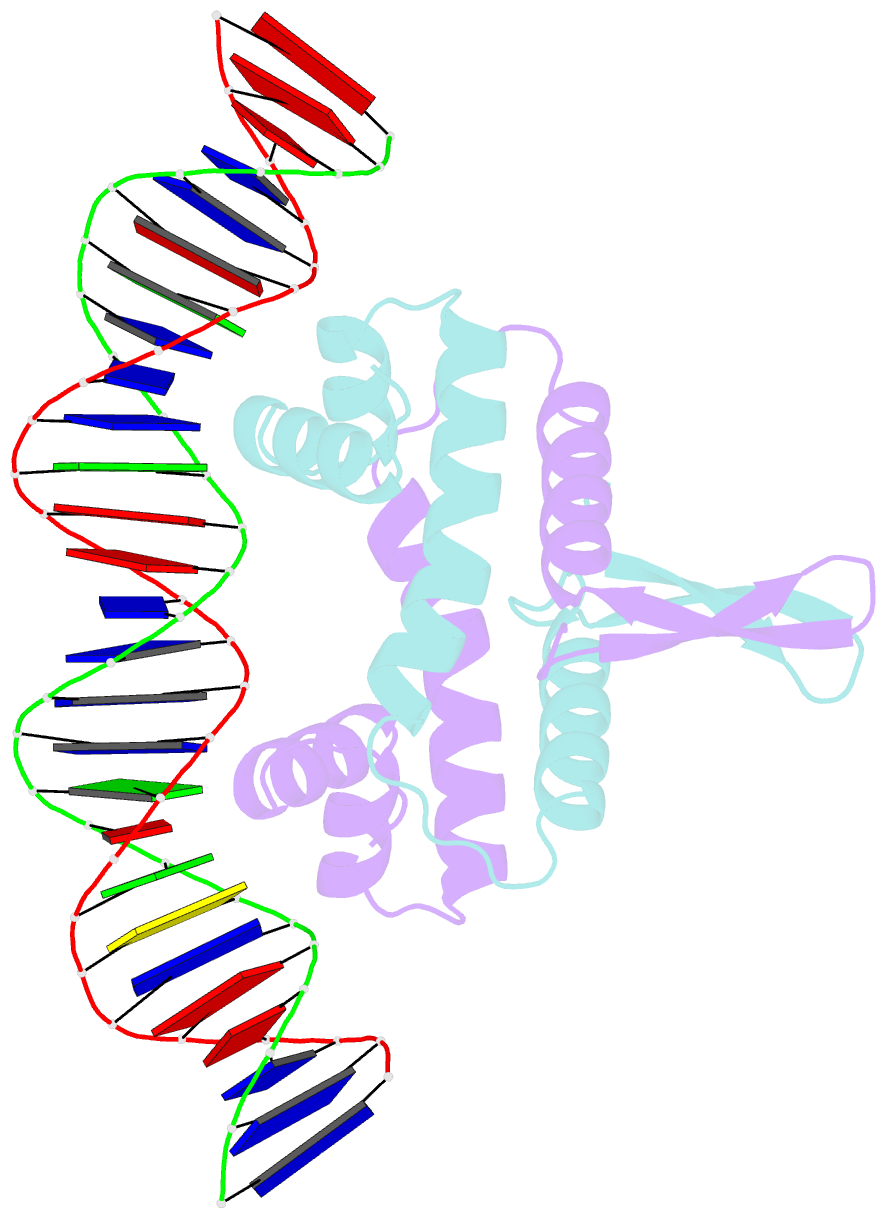Summary information and primary citation
- PDB-id
- 5ds9; SNAP-derived features in text and JSON formats;
DNAproDB
- Class
- DNA binding protein-DNA
- Method
- X-ray (2.561 Å)
- Summary
- Crystal structure of fis bound to 27bp DNA f1-8a (aaattagtttgaattttgagctaattt)
- Reference
- Hancock SP, Stella S, Cascio D, Johnson RC (2016): "DNA Sequence Determinants Controlling Affinity, Stability and Shape of DNA Complexes Bound by the Nucleoid Protein Fis." Plos One, 11, e0150189. doi: 10.1371/journal.pone.0150189.
- Abstract
- The abundant Fis nucleoid protein selectively binds poorly related DNA sequences with high affinities to regulate diverse DNA reactions. Fis binds DNA primarily through DNA backbone contacts and selects target sites by reading conformational properties of DNA sequences, most prominently intrinsic minor groove widths. High-affinity binding requires Fis-stabilized DNA conformational changes that vary depending on DNA sequence. In order to better understand the molecular basis for high affinity site recognition, we analyzed the effects of DNA sequence within and flanking the core Fis binding site on binding affinity and DNA structure. X-ray crystal structures of Fis-DNA complexes containing variable sequences in the noncontacted center of the binding site or variations within the major groove interfaces show that the DNA can adapt to the Fis dimer surface asymmetrically. We show that the presence and position of pyrimidine-purine base steps within the major groove interfaces affect both local DNA bending and minor groove compression to modulate affinities and lifetimes of Fis-DNA complexes. Sequences flanking the core binding site also modulate complex affinities, lifetimes, and the degree of local and global Fis-induced DNA bending. In particular, a G immediately upstream of the 15 bp core sequence inhibits binding and bending, and A-tracts within the flanking base pairs increase both complex lifetimes and global DNA curvatures. Taken together, our observations support a revised DNA motif specifying high-affinity Fis binding and highlight the range of conformations that Fis-bound DNA can adopt. The affinities and DNA conformations of individual Fis-DNA complexes are likely to be tailored to their context-specific biological functions.





